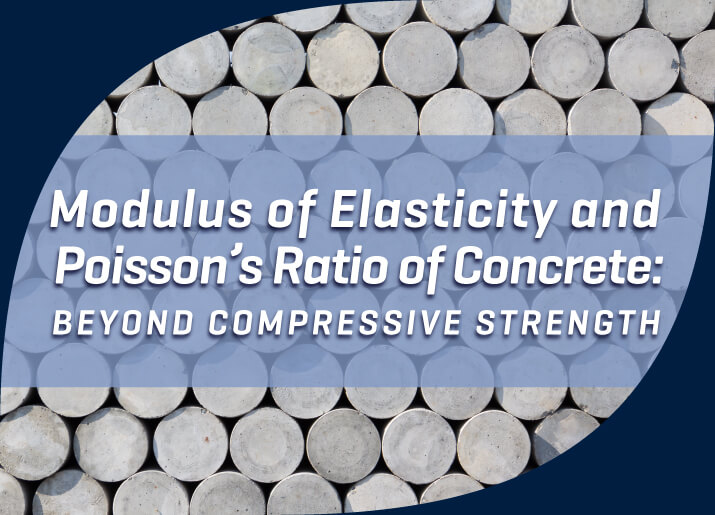
Modulus of Elasticity (MOE) and Poisson's Ratio are concrete compressive strength tests that can be performed using an Automatic Concrete Compression Machine. Learn how these tests are performed in our latest blog.
Have questions about your materials testing equipment? We have the answers to these questions and much more right here! Check back monthly for long-form blog posts, how-to guides and infographics. We’ll address industry insights, the operation and maintenance of specific equipment, and our product line recommendations, all designed to better serve you.
Bookmark this page, add it to your RSS reader, or subscribe to our newsletter, so you never miss a hot topic.

Modulus of Elasticity (MOE) and Poisson's Ratio are concrete compressive strength tests that can be performed using an Automatic Concrete Compression Machine. Learn how these tests are performed in our latest blog.
Knowing how to determine stress versus strain is central to almost any strength assessment performed in a construction materials testing lab. In this blog, we explore the various the test methods and instruments available for measuring load and displacement.
Knowing how to properly test and verify asphalt binders is essential to understanding how asphalt will react to various climate conditions. This guide covers the methods used to classify asphalt binders and how to perform these tests to ensure optimal pavement performance and longevity.
More than a century ago, Duff Abrams established a simple ratio to define the strength, quality, and workability of concrete mixtures. The water to cementitious material (w/cm) ratio is universally used in mixture design and batching, but accurate determinations for on-site acceptance of fresh concrete have remained elusive until now. The Phoenix method provides accurate and repeatable w/cm measurements in the lab or field in minutes.
If surface moisture evaporates from freshly poured concrete too quickly, the concrete surface dries out and plastic shrinkage cracking can occur. Learn how to monitor and mitigate plastic shrinkage for optimum concrete results.
Determining relative density, or specific gravity, allows accurate conversion of volumes to gravimetric weights for proportioning materials. Learn more about relative density/specific gravity test methods and the equipment used to perform this laboratory test.
While Part 1 of this blog series discussed nondestructive concrete testing methods and equipment, Part 2 will cover equipment used to detect location, orientation, and corrosion of reinforcing steel, the effects of moisture, and how to document concrete quality.
The dynamic cone penetrometer (DCP) is an efficient tool used to perform soil strength assessments of fine-grained soils, pavement base courses, and more. Learn about the advantages of this tool compared to other penetration testing methods and how to perform penetration tests using the dynamic cone penetrometer.
Concrete slump testing is the most common test performed on fresh concrete for any application. It is a significant factor when evaluating a concrete batch's compliance with the approved mix design and an eleventh-hour check of its suitability for placement. For this post, we focus on the slump test, how to perform it properly, and the best testing equipment to use.
If you regularly perform asphalt theoretical maximum specific gravity (Rice) tests, the Gilson Rice Shaker is a time-saving tool to have in your lab. Find out why this unit is the key to determining accurate specific gravity determinations for asphalt, aggregates, and soils.